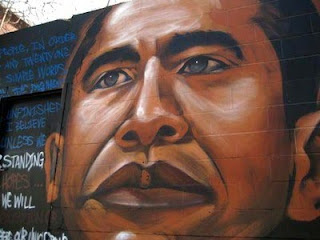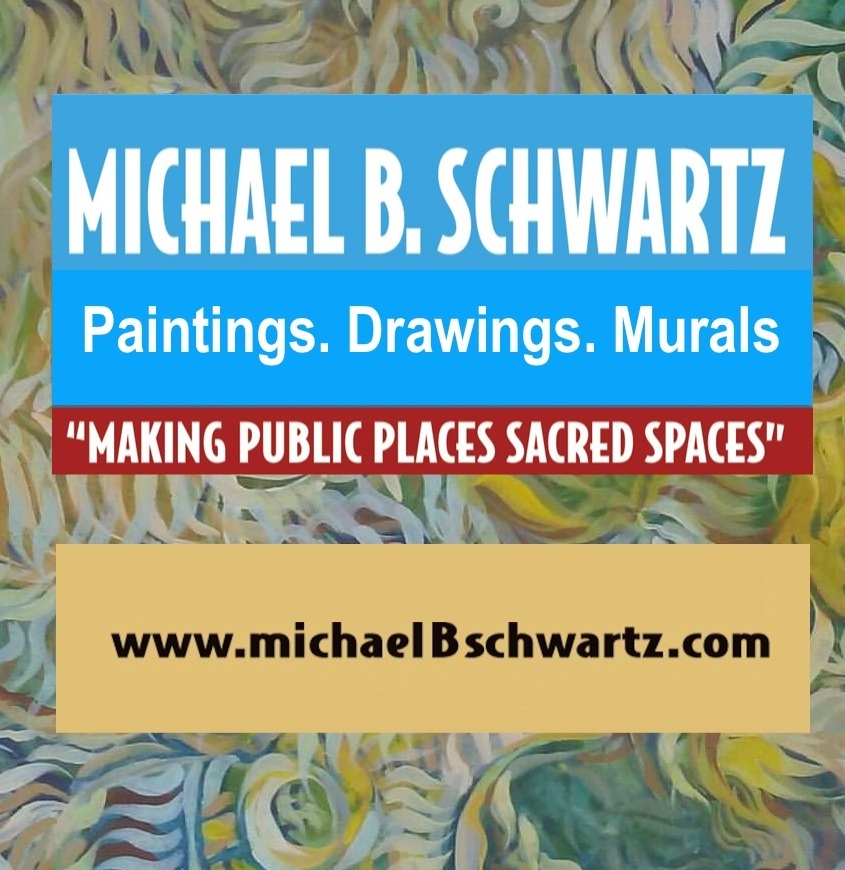 Arizona is an interesting place, and as most of the world now knows, the struggle for cultural democracy is in full swing. In almost every town and city we find an attempt to define our collective cultural identity as the Arizona centennial fast approaches.
Arizona is an interesting place, and as most of the world now knows, the struggle for cultural democracy is in full swing. In almost every town and city we find an attempt to define our collective cultural identity as the Arizona centennial fast approaches.One example of this struggle is a mural painted in west Phoenix entitled “Mural of Unity” The 400 foot mural has been painted, tagged and repainted several times.
Some call the work graffiti – others see it as a visual representation of the human rights struggle revolving around SB 1070. The mural originally featured McCain and Obama, as well as local celebrities. Now artists want to change the mural to depict the immigration controversy. The mural controversy tells a complex story about life in Arizona at this moment.
I first learned of this controversy from a fellow attendee of the South West Arts Conference (SWAC) hosted by the Arizona Commission on the Arts (ACA). The conference took place at the Chandler Center for the Arts against the backdrop of draconian cuts to the ACA and the tragic murder of a much loved Chandler Police Officer Carlos Ledesma . Also killed were two suspects, apparently active in the local music scene. On the first day of the conference massive state wide anti SB 1070 protests erupted statewide, as thousands of human and civil rights activists took to the streets, even dramatically blocking I-19 .
The gathering of mostly arts administrators never formally touched on these issues, foregoing open space discussions. I understand to some degree. Those of us working in the public eye seek to be inclusive of all, to transcend differences, to stitch together a tapestry that represents the full diversity of the places we live, work and play. Still I felt a disconnection between the events of the day and building a sustainable future for the arts in Arizona.
Meanwhile murals of President Obama are being defaced nationwide. Atlanta, GA and Houston, TX are two examples. In Brooklyn, NY a mural of President Obama was defaced due to a different form of politics between the artists. This brings up the question of civic responsibility among artists, and the struggle between free expression and public space.
 This is the ideal time to bring people together to dialogue about issues and using the arts to transcend differences. One issue that seems to come up is a sense of civic responsibility – we all belong to a community of people who cherish our freedoms. While some of the artists who created the Mural of Unity want to express their outrage with overt racism, other community members would prefer that the mural undergo a design and review process.
This is the ideal time to bring people together to dialogue about issues and using the arts to transcend differences. One issue that seems to come up is a sense of civic responsibility – we all belong to a community of people who cherish our freedoms. While some of the artists who created the Mural of Unity want to express their outrage with overt racism, other community members would prefer that the mural undergo a design and review process.A few say just paint / buff it out. Questions of content, who will pay for the mural restoration and ongoing maintenance, are not so clear. The issue at hand seems to be whose voices and ideas will be amplified on the wall. Once again we can see how murals are a reflection of our democratic process, or perhaps lack there of. As a friend of mine once said – "any time you add a face to a mural you are bound to have some controversy". The dialogue and process surrounding the Maryvale mural reflects the state of democracy here in Arizona, and it will be interesting to see how residents resolve the issue.
One thing I hope artists will learn from this and the now infamous Prescott mural is that these issues should be resolved in the community design process, not after the mural is finished. While this can be an extended and frustrating process, ultimately it is the artists’ responsibility to lead these conversations and create a work of art that reflects the diversity of views that emerge. This is a double-edged sword, and one that can easily result in censorship or boiling down of content. At some point the artist may decide that it’s time to make a statement of principle - one that they will not step down from. I respect that and also accept that the public, or those that commissioned the mural, may not agree. Like all works of public art the artists should be ready for the controversy that may ensue, and embrace it with love and compassion. Mural making can be many things, decoration, wall paper, or social change incarnate. Whatever the motivation muralists reflect the cultures from which they emerge and are brave enough to do so in the public eye.
PS:
During my research into this story I discovered a wonderful group called Las Artes de Maricopa, a workforce development through the arts program. The art being produced is a beautiful mix of mosaics with hand painted imagery.








